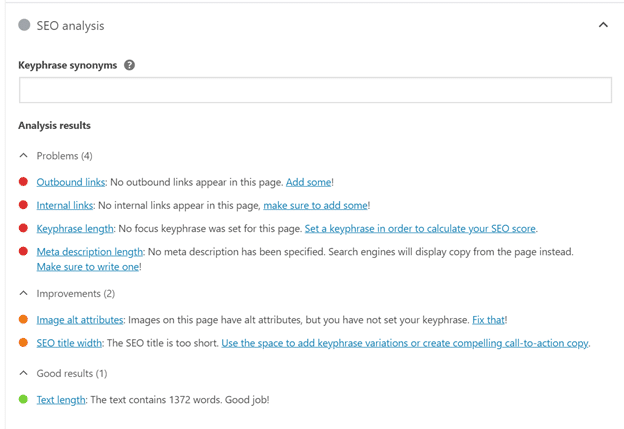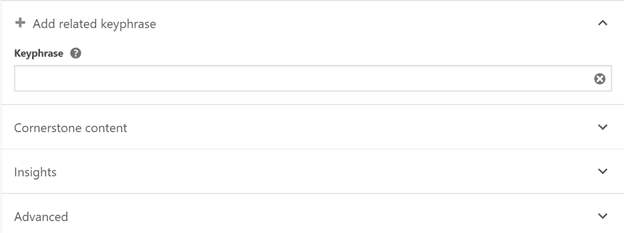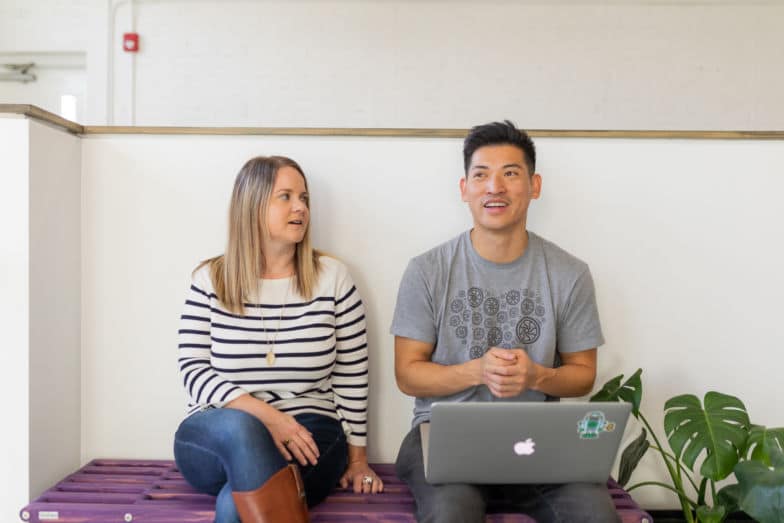
SEO for Beginners (+ an Overview of Yoast SEO!)
As the last year-plus has taught us, there are just some things you can’t prepare for. However, when it comes to your website, you can prepare and optimize for the way people view your content.
Search Engine Optimization (SEO) can provide a major boost to your site and its content. While it may seem like another thing to learn when trying to build and maintain your website, or maybe even a cost to a freelance specialist you don’t want to necessarily pay for, that’s actually not the case. In a short amount of time, you can gain a solid understanding of SEO and learn how to better improve your site’s search results.
To provide a starting point, I’ve compiled my best possible analysis for those new to SEO or those who want to sharpen their skills a bit. While this article is focused on WordPress sites, a lot of the information below can also be broadly applied across other types of platforms, including sites built with React, Squarespace, or an eCommerce site on Shopify.
In This Article, We’ll Cover:
What is SEO
In the broadest sense, SEO is the process in which a search engine’s crawler or bot will index your site. This basically means it will read the contents of your site, right down to the words on the page and the internal and external links, and send that info back to the search engine in question (this is usually Google, however, other search engines such as Bing will crawl your site from time to time too).

Holistic SEO is the process of naturally improving your site’s rankings on a search engine, without doing anything wrong or bad, that would further decrease your overall ranking. This guide will purely focus on holistic SEO, and try to steer you away from some other shortcuts that in the long run, can lower your ranking.
With SEO, you can write, build, and make content for the user; you don’t make content specifically for the purpose of ranking. With this in mind, I recommend if you find your user count low, have a high homepage hit rate, but low page transition rate, or just want to improve the aesthetic look of the site, take the time and either look at improving it yourself or hire a professional to better improve your site’s design.
How Site Design Impacts SEO
Good site design is as much an appealing factor as the content you write, the images you upload, and the products you sell. If you aren’t comfortable or financially ready to hire a developer, I recommend spending the time researching how to use a theme builder. While these aren’t a full replacement for a good developer, they can help those (with little to no programming experience) refresh websites with a little time invested.
On the topic of good design, one thing to keep an eye out for: dead redirects. As you grow your site, you may remove content, move it, change its name, or rebrand specific pages. Much like dropping a fresh ice cream cone on the pavement, one thing that really grinds Google’s gears is indexing a site and finding an image link, page link, or internal link, that suddenly doesn’t lead anywhere. Search engines hate 404 links, and will actively rank your site lower if you contain too many 404s for too long. A good practice is to learn how to use a redirection plugin. Yoast SEO Pro offers a 301 redirection tool on their plugin, however, there are plenty of free plugins that can do this for you too.
Get into the good habit of redirecting any known broken link to a live page, which will reduce any 404s on the site and help the crawler find the directed content easier.
What is Yoast SEO and How Does it Work
In the WordPress world, Yoast SEO is the most common SEO plugin installed across all of WordPress.org. Once installed, at the bottom of your page or post editor (by default, this is Gutenberg, however, if you’re using a theme builder tool it may be further down the page), you can enable a full suite of options for adding and editing keywords. As you can see in the photos below, some of the dialogue options you’ll have include adjusting and inputting your keywords, synonyms, Yoast’s analysis of the site, and a few more handy tools.
Yoast offers a pro and free version of their plugin, so I would research which version suits your current and growing needs best. Most people should be fine with the free version, but the screenshots I have featured are from a sample page with the pro version connected to the site:


User experience plays as much into the effectiveness of SEO as it does make your site look attractive. Your users won’t want to use a site that isn’t intuitive or easy to use and will actively leave a site they find unusable.
SEO Best Practices
Since SEO is a pretty broad topic, I have compiled a few handy best practices to take note of when auditing or writing any content specific to your site. There are plenty of best practice actions you can follow, but for the SEO novice, or editors and writers needing a bit of a push in the right direction; these are what I would recommend.
SEO best practices:
- Avoid the use of black hat SEO practices
- Invest in internal linking
- Look out for malware
- Keep performance and speed top of mind
Avoid Black Hat SEO Practices
My first tip is to avoid the use of black hat SEO practices. Also called Spamdexing, this is primarily the use of illegal services or tools that are designed to improve the ranking of your site. An example of this would be having bot visitors crawl a site in an effort to trick Google into viewing it as a high-traffic site, and as such, deserving of a higher placement for whatever category your website is focused on.
Search engines these days are built on a myriad of algorithms. Companies like Google update their crawler algorithm at varied intervals. While we aren’t privy to the ins and outs of the algorithm they use, we can kind of get an idea of the frequency of their updates. They do this (almost at random) to deter black hat SEO attempts and crawler abuse. The last thing we would want is Sam’s super cool cola company taking the place of Coke when you searched “Thirst Quencher” in Google!
Black hat SEO can also include things like keyword stuffing (writing a really thin, vague post, but then in your SEO management settings, cramming as many keywords into a post as possible). If you’re an Instagram user, you can actually see examples of this if you ever spot a bot posting. They use a ton of somewhat relevant hashtags in a post in order to help it trend.

Another example of black hat SEO is hiding your links or text on the page—this is achieved by hiding certain paragraphs in CSS by displaying them off the page. Technically, the content still renders, however you actually don’t see it as a user. You can read more about black hat SEO and some of the best counter-strategies here on Neil Patel’s blog.
Invest in Internal Linking
A second tip is to invest a good amount of time in what is called internal linking. As your site grows, be it a recipe site, a blog, or something in between, it is inevitable that your content will grow as well.
A good practice is to go back into old articles, and link to more relevant, newer content—and the same goes with new articles. If you link back to older content to reference specific articles or opinions, this is a good healthy practice for your blog.

Why? Well, as I mentioned earlier, search engines employ crawlers to index your site and send the data back to the search engine. Internal linking actually helps the crawler index your site faster, as it helps it know where new and old content is.
Think of it as playing snakes and ladders and your piece of the board is the crawler. When you land on a snake or a ladder, you are moving upwards or downwards on the board faster than you would be just rolling the dice. The same goes with the crawler. Once it scans the link, it will then proceed to go to the internal page you linked to and then commence to index, or re-index, that page in question—helping your newer, most up to date content, get on Google faster. Think of it as creating a better relationship between your content.
Yoast SEO has a great article from their training database on what internal linking is. I recommend reading this as it also further outlines the difference between internal and external linking.
It can be easy for SEO posts to say “just write good content, and you will eventually rank better”, and as we know it isn’t exactly that easy. However, one thing I’ve seen a lot of people overlook is the simplicity and effectiveness of using the correct keywords for their content.
Look Out for Malware
One thing to constantly look out for on any website is malware. Malware comes in different shapes, sizes, forms, and functions; but overall, its end goal is pretty much the same – disrupt the user experience on the site. On top of keeping your site’s WordPress version, theme, and plugins up to date, it is worthwhile checking the site every now and then to make sure there isn’t any malware on the site causing you or your user any headaches.

A common piece of malware, caused from varying vulnerabilities, aims to hijack your primary domain, and redirect it to another malicious service or website. This sort of infection is obvious to Google once they index the site, however other types of malware targeted with specific purpose (like capturing user information), may be less apparent to the user, but still visible to the search engine.
Once a search engine is made aware of an infection, over time, it will take steps to quarantine that site in its own way by ranking it lower on the search results. If not cleaned and returned to an uninfected state, the site will eventually be ranked quite low and will be very hard to recover from. Therefore, it’s imperative to keep everything on the site up to date, if only to deter any headaches down the road.
Keep Performance and Speed Top of Mind
Another thing to keep in mind is your site’s performance and speed. Slow sites are actively harder for Google to index, and their crawler won’t stay on your site all day to index it – there is too much of the web for it to crawl in order to spend a huge amount of time on one site.
Keeping your site working quickly, your page load speed swift and your time to first byte (TTFB) under 500-800ms can help the user get to the site faster, load it quicker, and to see your content faster.

Your overall goal should be to make your page interactive in the first three seconds the page starts to load in order to allow for consumers to actually engage with your site’s content before bouncing from your page.
WP Engine has a performance team which can help fine-tune the site from a server perspective, however a poorly built site at the end of the day, is still a poorly built site. While it may not be an immediate fix, hiring a developer to help improve your site will, at the end of the day help you drive more genuine traffic to your site
Conclusion
Overall, optimizing your site for SEO is about your user experience and not making it search engine friendly. That is often overlooked when trying to get the best place on a search engine and the result is content suffering.
I hope that with these helpful tips and guidance, this article can be the basis for you to take your site in a great direction for this year and beyond, and not only help Google index your site better, but for you to make great content.











